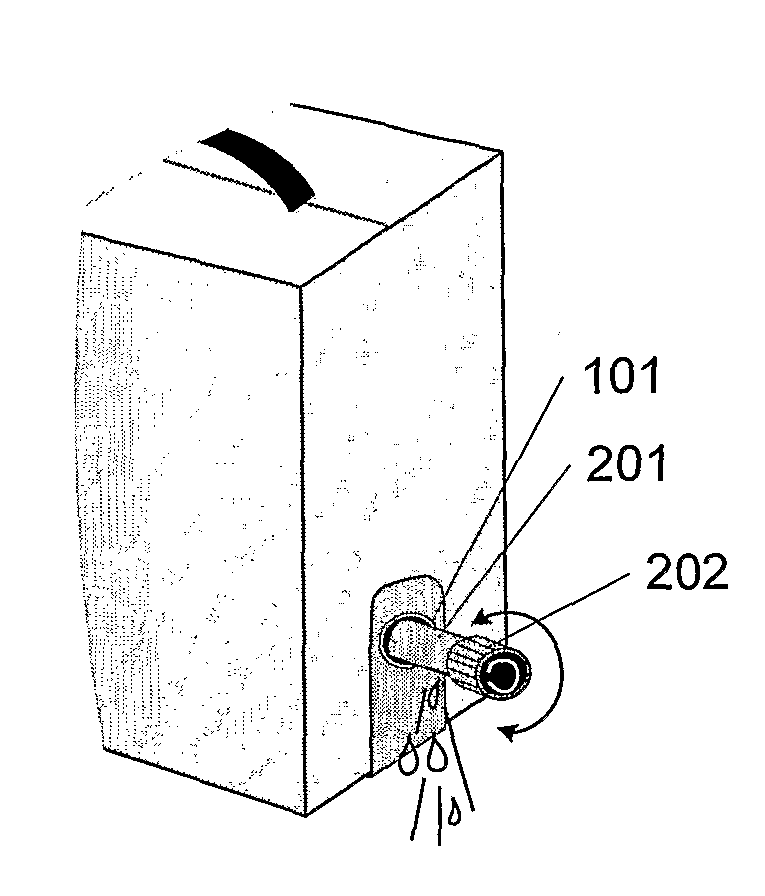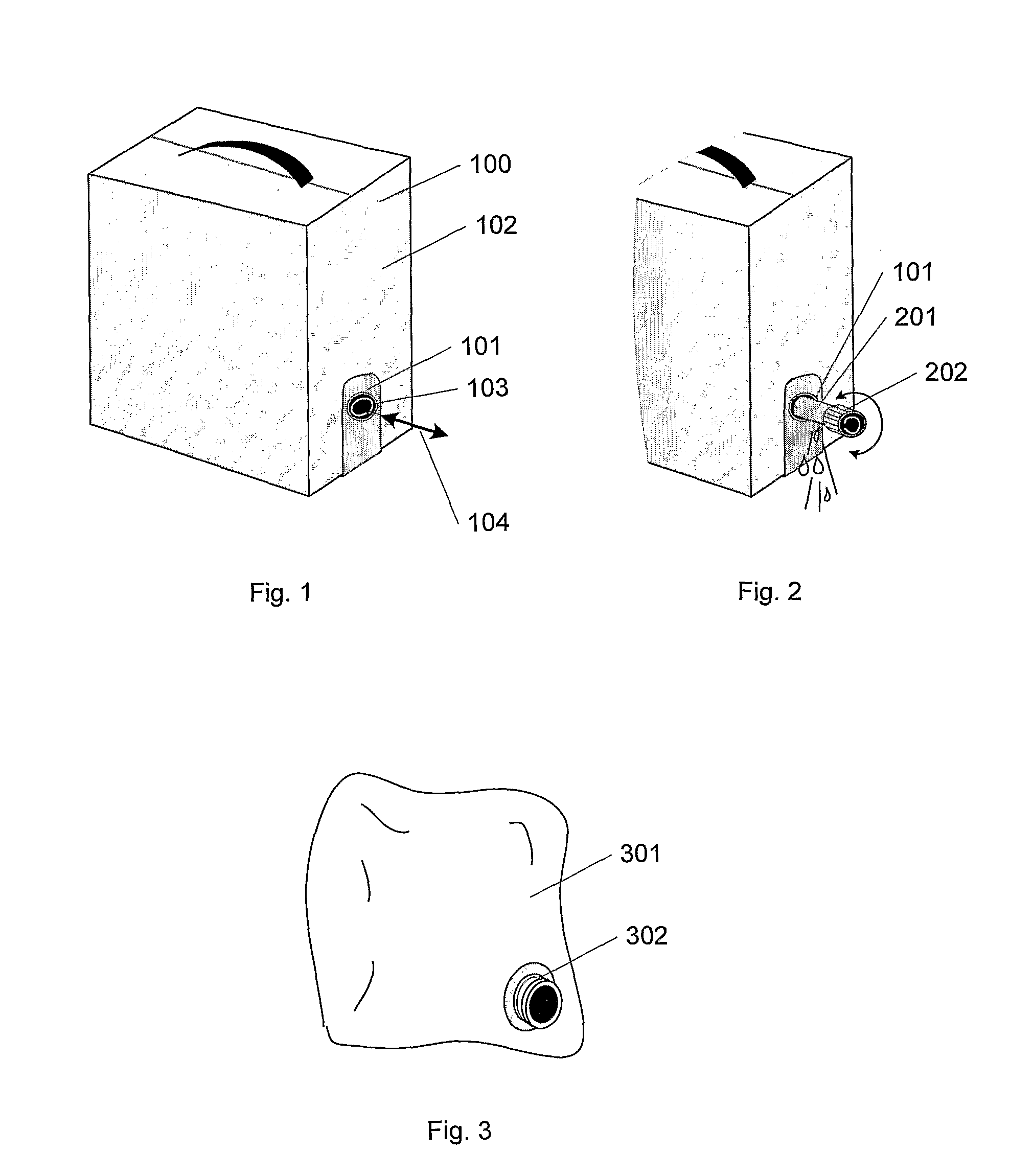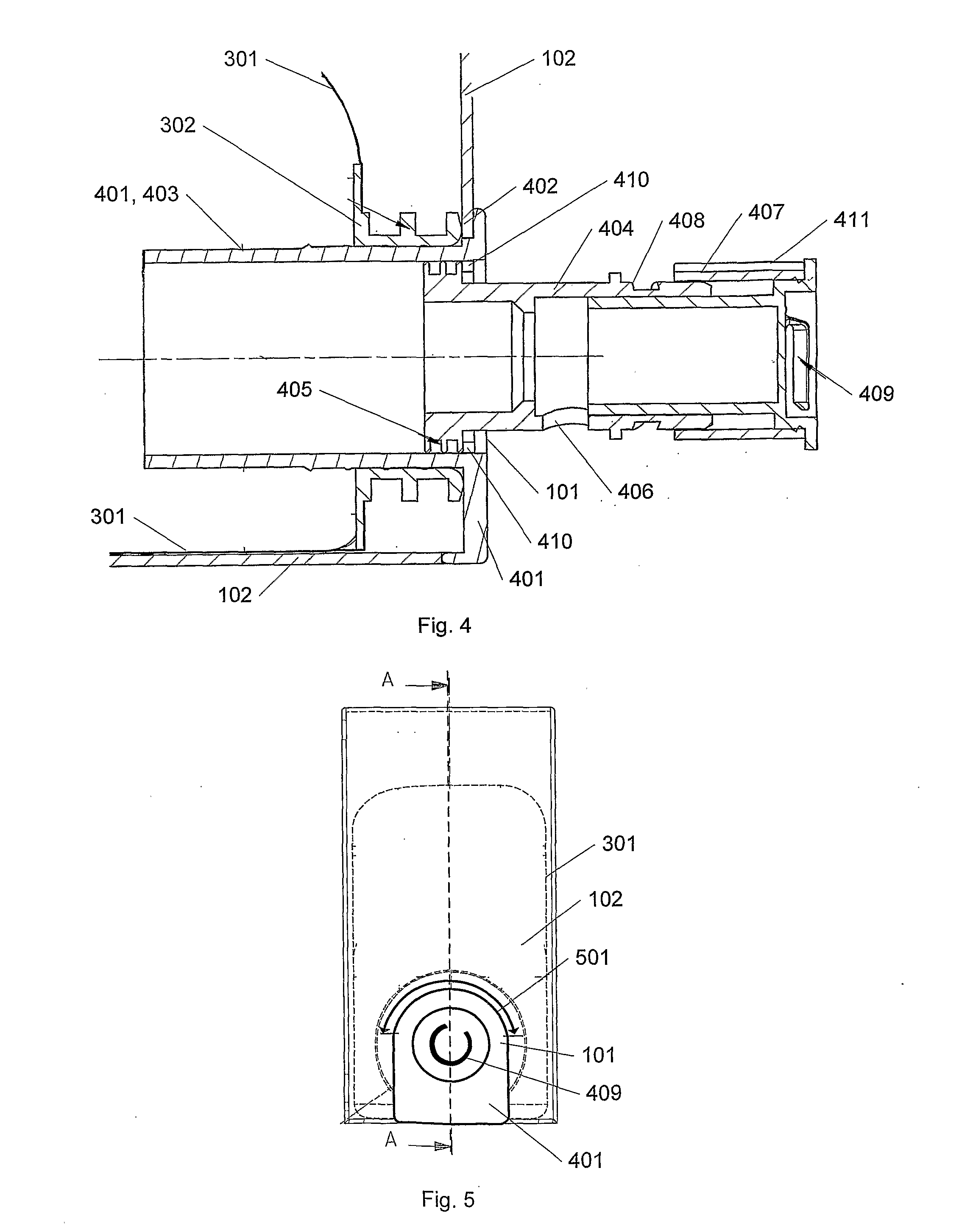Tap for a Bag-in-Box
a technology for liquid dispensing units and bags, applied in the direction of liquid dispensing, packaging under special atmospheric conditions, drinking vessels, etc., can solve the problems of poor product quality, difficult dispensing, and unfortunate impression of cheap products, and achieve the effect of producing very inexpensively
- Summary
- Abstract
- Description
- Claims
- Application Information
AI Technical Summary
Benefits of technology
Problems solved by technology
Method used
Image
Examples
Embodiment Construction
[0040]FIG. 1 shows an example of a bag-in-box 100 for storing a liquid and equipped with a tap 101 according to the invention. The liquid is preferably kept in a flexible bag within the container 102 so that the fluid can be dispensed in small amounts without air getting in contact with the remaining fluid. The box or container 102 can be made of a cardboard material, a plastic or a metal, and can have any shape preferred by the producer. One very big advantage of the tap 101 according to the invention is that it is placed in level with one of the sides of the box 102 with no protruding parts, so that the box can be packed and handled optimally without any risk of damaging any parts and still taking up a minimal amount of space. Furthermore, the tap leaves the design of the exterior of the box as undisturbed as possible with a nice finish.
[0041]The tap is operated by simply pulling in a small ring or handle 103 as illustrated by the arrows 104. Hereby a telescopic pipe 201 extends a...
PUM
| Property | Measurement | Unit |
|---|---|---|
| Plasticity | aaaaa | aaaaa |
Abstract
Description
Claims
Application Information
 Login to View More
Login to View More - R&D
- Intellectual Property
- Life Sciences
- Materials
- Tech Scout
- Unparalleled Data Quality
- Higher Quality Content
- 60% Fewer Hallucinations
Browse by: Latest US Patents, China's latest patents, Technical Efficacy Thesaurus, Application Domain, Technology Topic, Popular Technical Reports.
© 2025 PatSnap. All rights reserved.Legal|Privacy policy|Modern Slavery Act Transparency Statement|Sitemap|About US| Contact US: help@patsnap.com



